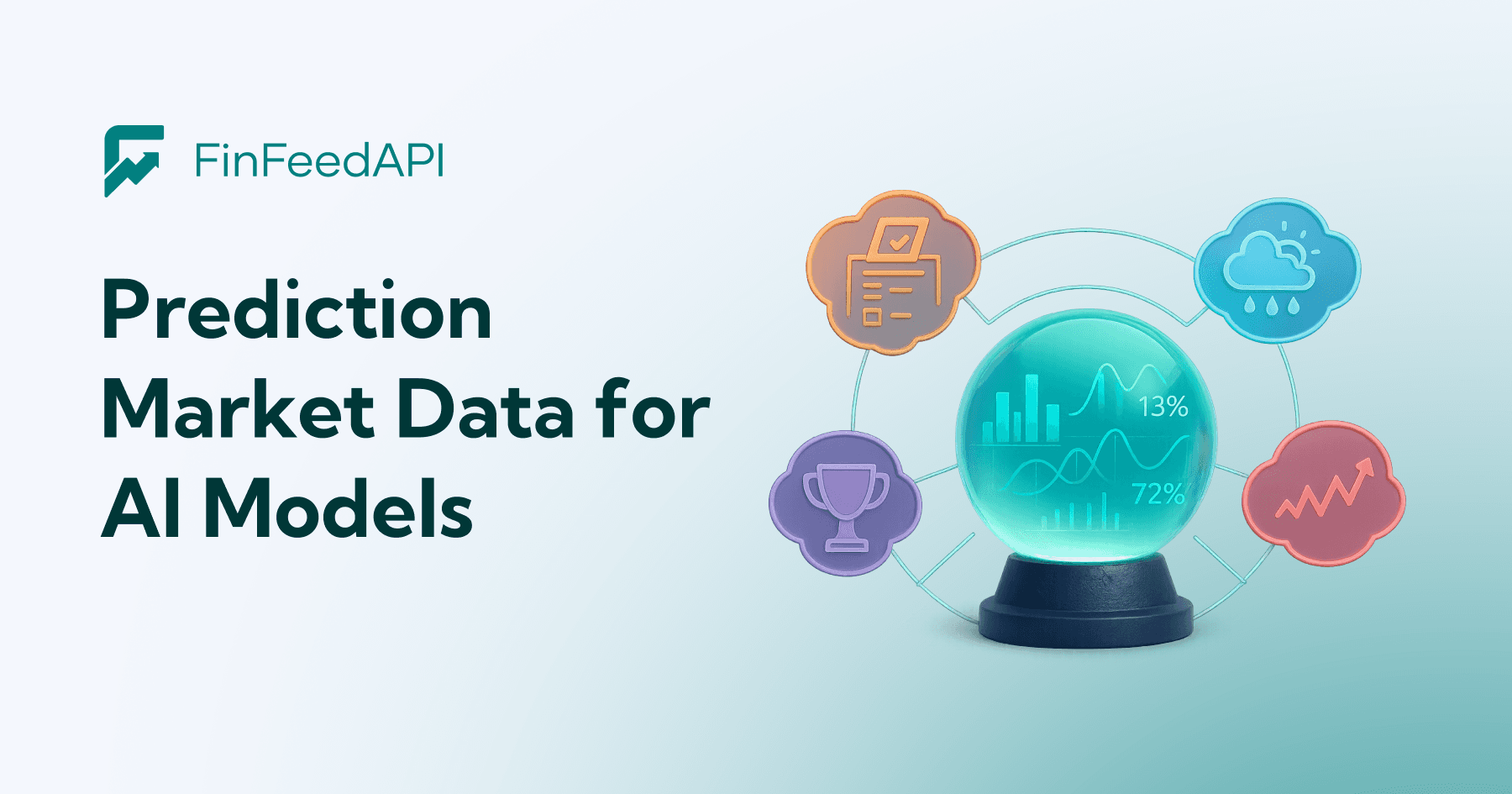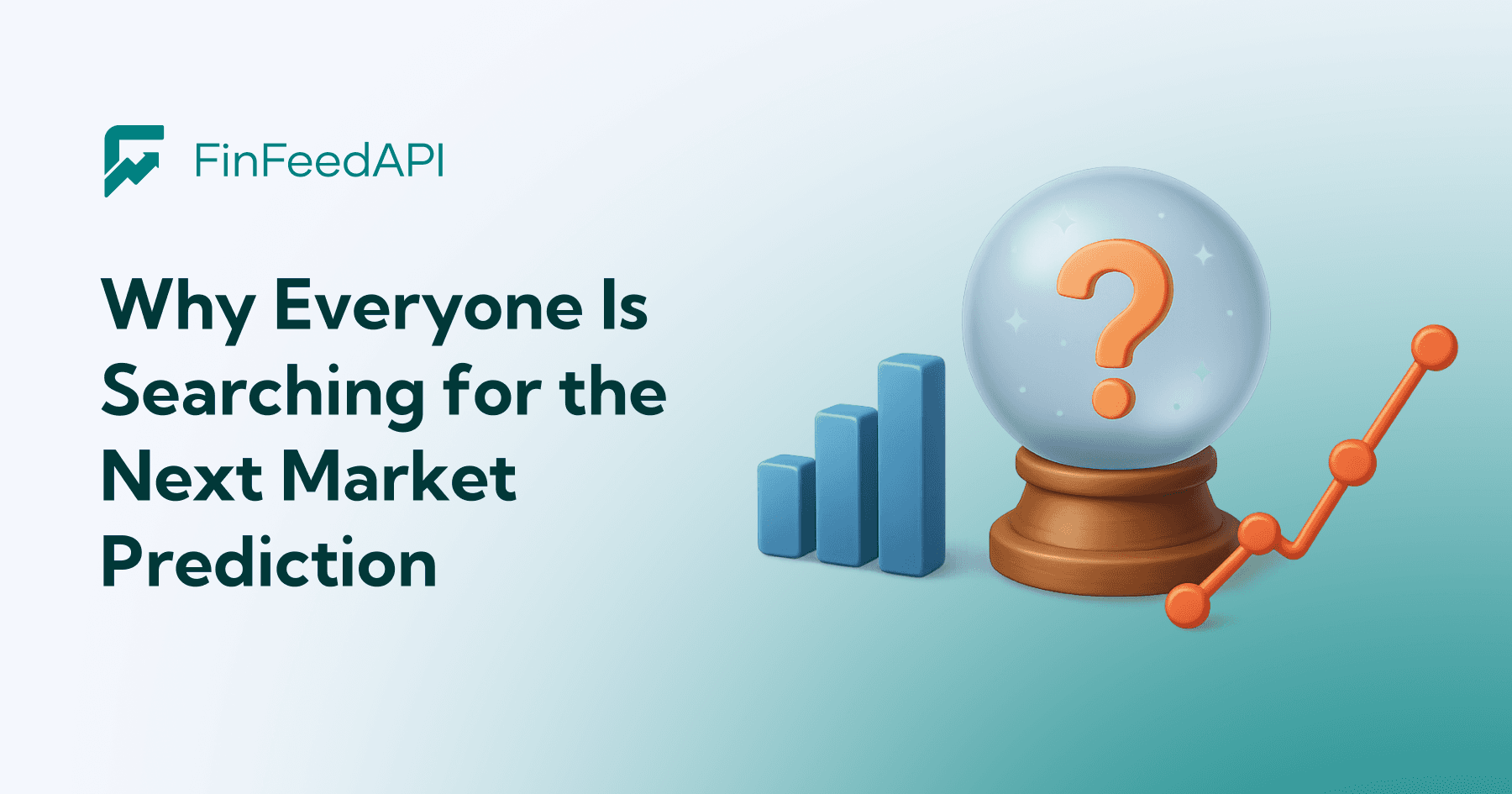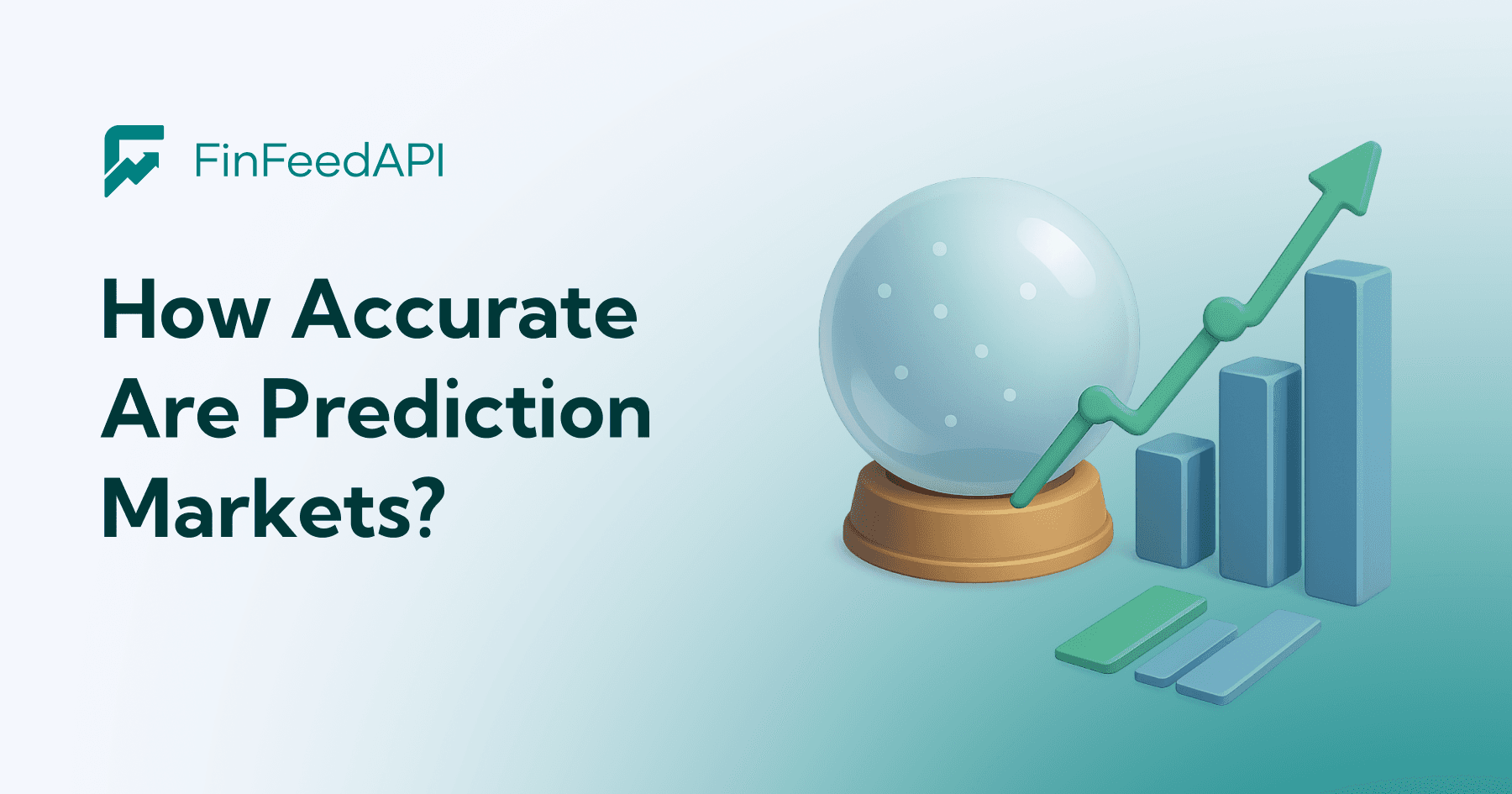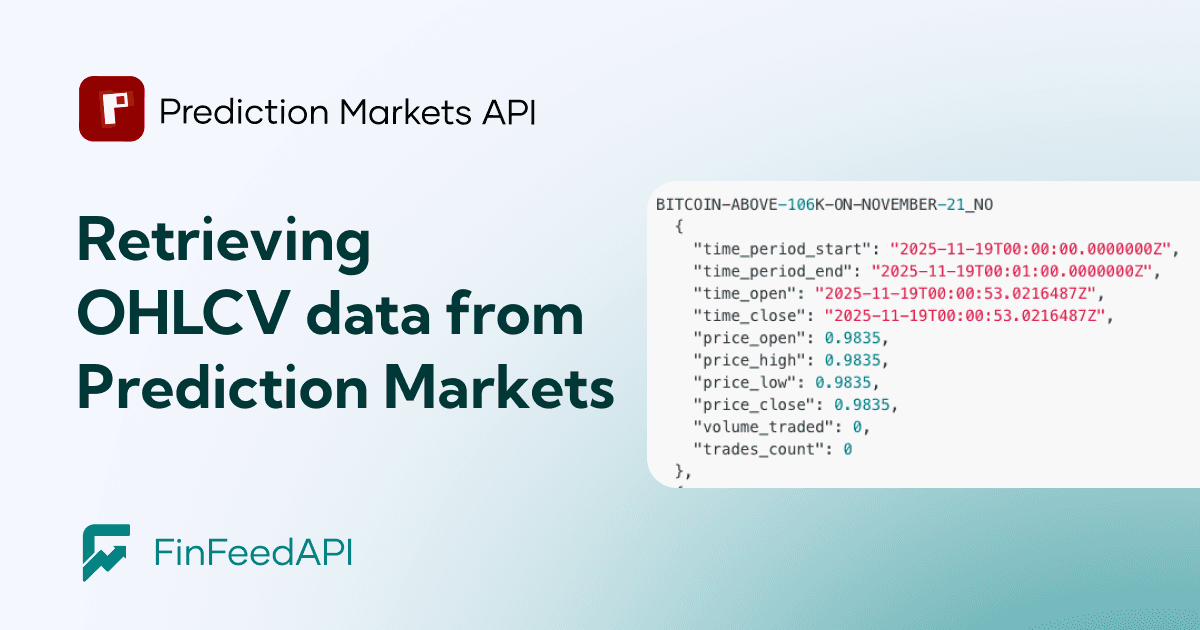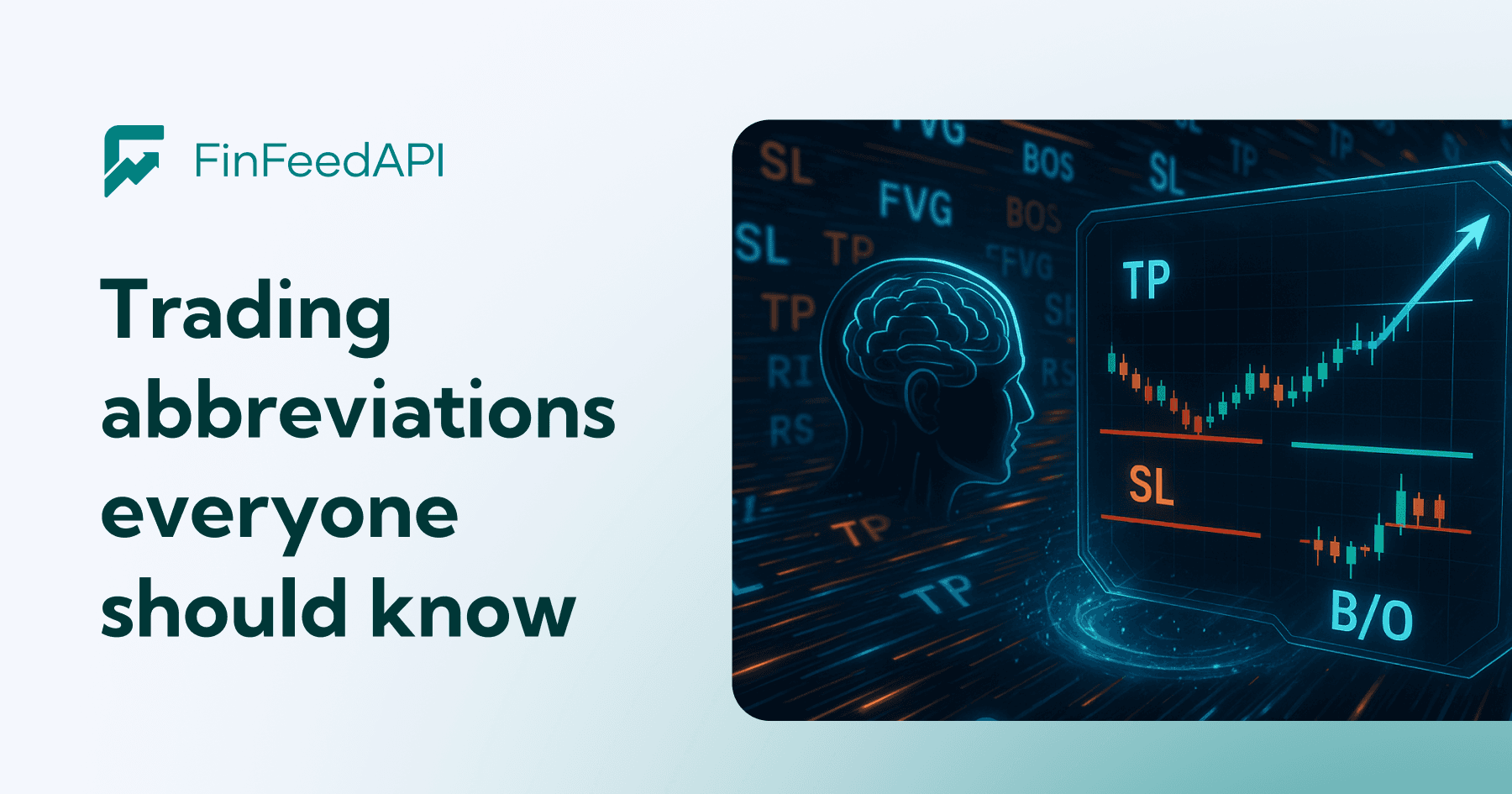Markets forget nothing. Every tick, rally, and crash is recorded somewhere — hidden in decades of numbers that tell the real story of how money moves.
Today, you don’t need a Bloomberg terminal to see it. Historical stock market data APIs have made those archives accessible to anyone with a line of code. Nearly 70% of financial institutions already rely on them to feed trading systems, portfolio tools, and research platforms.
They turn raw history into structured data — ready for analysis, strategy testing, or teaching the next generation of quants. Whether you’re backtesting an idea or building a product, these APIs are how you tap into the market’s memory.
What is a Historical Stock Market Data API
A historical stock market data API gives developers direct access to past market information — prices, volumes, and corporate actions — through simple HTTP requests.
Instead of tracking live prices, these APIs return archived market records going back decades, often to the 1970s. The data comes in structured formats like JSON or CSV, so it’s easy to use in charts, research tools, or trading systems.
At the core is the OHLCV structure: Open, High, Low, Close, and Volume. Request data for Apple (AAPL) in 2020, and you’ll get every trading day from that year, complete with timestamps and price details.
Most APIs also include stock splits, dividends, and other corporate events — the context needed to study real trends, not just numbers. This is what allows analysts to revisit moments like the dot-com bubble or the 2008 crash and understand how the market actually behaved.
Types of Historical Stock Data Available
Not all historical data looks the same. Different timeframes tell different stories, and choosing the right one depends on what you’re building or testing.
End-of-Day (EOD) Data
This is the most common format — one record per trading day showing the open, high, low, close, and volume. EOD data arrives shortly after markets close (usually within 30 minutes) and gives a clean daily view of performance. It’s ideal for long-term analysis, portfolio tracking, and strategy backtesting.
Intraday Data
For short-term strategies, intraday data fills in the gaps. APIs can return 1-minute, 5-minute, 15-minute, or hourly bars that capture how prices move within a single session. During volatile periods — like March 2020 — this level of detail can reveal swings that daily data completely hides.
Adjusted vs. Unadjusted Prices
Adjusted prices account for splits and dividends, keeping charts continuous over time. For example, after Microsoft’s 5-for-1 split in 2024, adjusted data reflects that change retroactively, while unadjusted prices show what actually traded before the split. Both views matter — one for math, one for history.
Corporate Actions and Dividends
Good APIs also include corporate actions like dividends, splits, and mergers. These details are critical when you need accurate performance metrics or dividend-adjusted returns. Johnson & Johnson’s decades of quarterly dividends, for instance, can only be modeled correctly with this type of data.
Extended Market Hours
Trading doesn’t stop at 4 p.m. anymore. Extended-hours data captures activity before and after the bell — when earnings drop, guidance shifts, or news breaks overnight. For active traders, it’s often where the real story starts.
Typical timeframes look like this:
- 1-minute: 390 data points per session — detailed enough for scalping or day trading.
- 5-minute: 78 data points — good balance between signal and noise.
- 15-minute: 26 data points — common for short-term analysis.
- Hourly: 6–7 points — best for intraday trend tracking.
- Daily: ~252 points per year — the standard calendar for long-term investors.
Free vs. Paid API Plans
Most developers start with free API tiers — and for early testing or small projects, they’re great. But when you move into production or research-scale work, paid plans quickly become essential.
Free Plans
Free tiers usually come with limits: how many requests you can make per minute or per month, and how far back the data goes. They’re fine for prototypes, education, or light data pulls — but not for serious backtesting or large-scale analytics.
Most providers allow around 5–100 requests per minute and only one to two years of historical data. That’s enough to learn, not enough to build on.
Paid Plans
Subscriptions unlock deeper history, higher rate limits, and extra features like:
- Full historical coverage (20+ years of data)
- Real-time or near-real-time updates
- Fundamental and earnings data
- Pre-built technical indicators
- SLAs and dedicated support for production use
Paid tiers typically start around $30–50 a month for smaller plans and can run into the hundreds for professional or enterprise access.
That cost isn’t markup — it covers exchange licensing and the infrastructure needed to keep feeds stable and accurate.
The rule of thumb: use the free plan to build, the paid plan to operate.
Data Quality and Reliability Considerations
When it comes to financial data, accuracy isn’t optional — it’s everything.
Even small gaps or delays can distort analysis, trigger bad trades, or break automated systems. That’s why checking a provider’s data quality should come before anything else.
Data Sources
Not all data is created equal. Some APIs connect directly to exchanges like IEX or NASDAQ, while others pull from third-party aggregators. Direct exchange feeds give you cleaner, verified prices — but may cover fewer markets. Aggregators offer wider reach, though they can introduce small mismatches or lags between updates.
Update Frequency
Timing matters. U.S. exchanges usually refresh end-of-day data within about 15 minutes of closing, while international markets might take a few hours. For live applications, professional-grade feeds deliver updates within milliseconds — the difference between seeing the move and missing it.
Adjusted vs. Raw Pricing
Good APIs provide both. Adjusted prices smooth out history for splits and dividends — the kind of data analysts use for charts and backtests. Raw prices, on the other hand, show what traders actually saw at the time. Apple’s 4-for-1 split in 2020 is a classic example: adjusted data shows continuity, raw data keeps the original trading record.
Handling Missing Data
Markets close for holidays. Stocks halt for volatility. When that happens, bad datasets sometimes show false zeros or missing volume. Reputable providers mark those periods clearly, so algorithms don’t misread silence as a signal.
Uptime and Reliability
If you’re building anything production-level, check the SLA. Reliable APIs guarantee 99.9% uptime — and back that with correction procedures when errors occur. That consistency is what keeps trading systems and dashboards running smoothly day after day.
How to Validate Quality
Smart teams don’t just trust — they verify.
- Cross-check multiple sources for outliers.
- Flag price jumps or volumes that don’t make sense.
- Monitor timestamps to catch stale feeds.
- Confirm that highs and lows always bracket opens and closes.
- Review split and dividend adjustments regularly.
Solid data isn’t glamorous, but it’s what separates real financial tools from broken ones.
Data quality metrics to monitor:
| Metric | Good Quality | Acceptable | Poor Quality |
| Update Latency | <15 minutes | <1 hour | >2 hours |
| Missing Data | <0.1% | <1% | >2% |
| Price Accuracy | 99.99% | 99.9% | <99% |
| Uptime SLA | 99.9% | 99% | <95% |
Getting Started with Historical Stock Data APIs
Working with historical market data is less about complexity and more about discipline. The real challenge isn’t calling the API — it’s setting up a system that’s accurate, scalable, and won’t fall apart when you need it most.
Start by picking a reliable provider and learning its structure. A free plan is usually enough to get familiar with response formats, rate limits, and quirks before you commit. Once that foundation is solid, move to production-level access — but keep your architecture flexible enough to switch vendors if needed.
Caching is your best friend. Historical data doesn’t change, so there’s no reason to fetch it twice. Storing key records locally reduces costs, improves speed, and keeps your system light. The same goes for batching requests — fetching groups of tickers in one call will save time and prevent you from hitting rate limits.
Finally, monitor everything. APIs fail, feeds slow down, and data sometimes arrives incomplete. A simple alerting setup for missing data or slow responses can save you hours of silent debugging later.
In short: treat your data pipeline like part of your product, not just a background process. With the right structure, historical APIs can give you decades of market insight — without the maintenance nightmare that usually comes with it.
Let's talk about how FinFeedAPI can assist you with this process!








